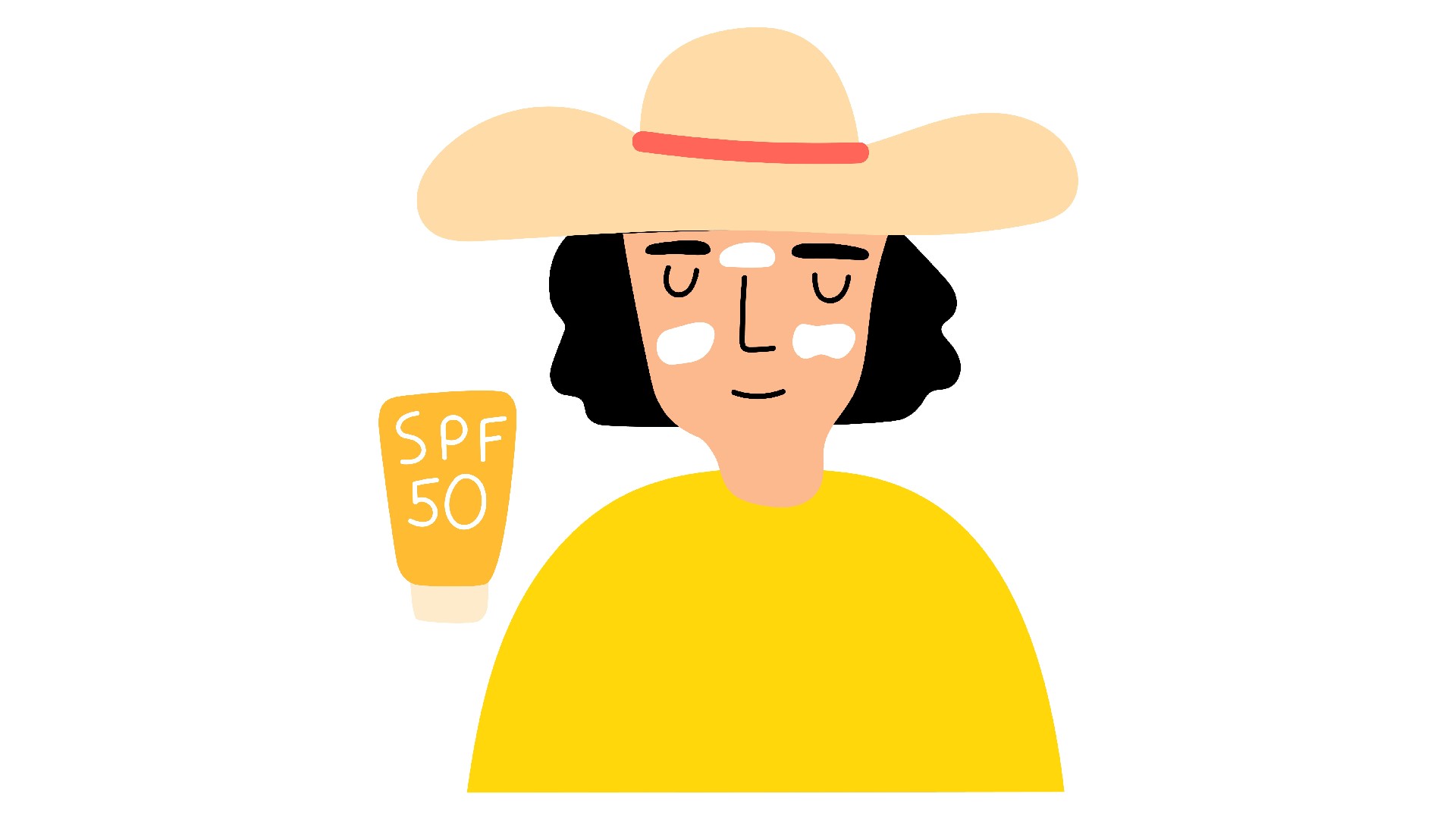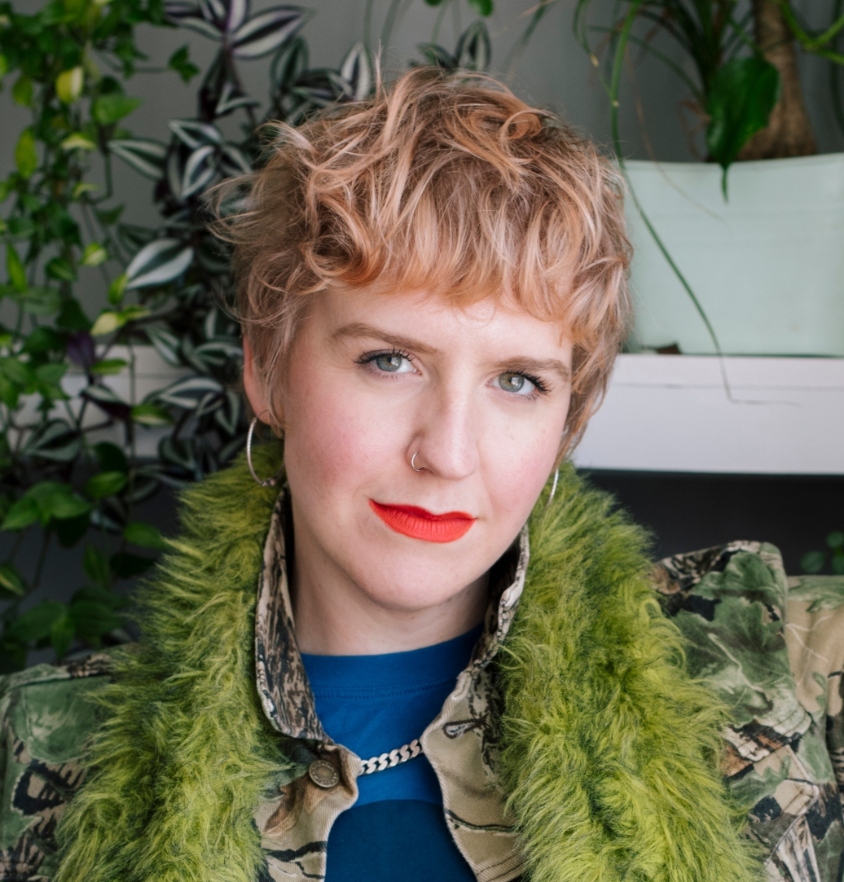9 things I wish I'd known before having laser hair removal on the face
Thinking about having laser hair removal on the face? One writer tried the treatment and these are her honest thoughts...


Laser hair removal on the face is an excellent treatment for those wishing to tackle anything from unwanted peach fuzz to wiry prickly patches. However, because the subject of facial hair is often deemed taboo, it can be shrouded in mystery—which I discovered when I began my own treatment journey.
Have you ever found yourself, a million miles away, jutting your lower jaw out and gently massaging that top-secret chin hair you missed when tweezing? Well, it turns out you're not alone—far from it in fact. Hirsutism, according to the NHS, is a condition in women that results in excessive growth of dark or coarse hair in a male-like pattern, in places like the face, chest and back. It's linked to an excess of 'male' hormones called androgens—the most common cause of which is polycystic ovary syndrome (PCOS).
As well as androgens, genetics, and age are other common factors that cause female facial hair growth, but PCOS is where I personally step into the equation, as one of the estimated 10% of women with the condition. Although it's important to remember that many women are completely comfortable not removing facial hair, I personally have chosen to, and it's not just about the hair itself. Even if I allow it to grow freely, ingrown hairs and adult acne are exacerbated by hirsutism.
With the help of Michelle Lambert, senior consultant at the industry-leading Pulse Light Clinic, and Dr Anjali Mahto of the British Association of Dermatologists, I'll unpack everything I wish I'd known before having laser hair removal on the face.
laser hair removal on the face: what I've learned
1. It's not for every hair type
Sorry to shatter any dreams of laser as a one-size-fits-all hair removal from the face solution, but some individuals just need not apply. As Lambert explains, "It doesn’t work on red hair or blonde hair or very fine hair. The hair needs to have some sort of texture."
That's not to say that it's curtains on your dreams of permanent hair removal, because electrolysis, which is the only FDA-approved permanent hair removal solution, works on any hair or skin type. Our electrolysis vs laser hair removal guide can help you weigh up both options.
Dr Mahto is keen to debunk another piece of conventional wisdom—that only people with lighter skin tones and dark hair should have laser hair removal. She adds, "laser technology has advanced in recent years, increasing the number of people who can have laser hair removal safely, including people with very light skin tones and darker skin tones."
Sign up to our free daily email for the latest royal and entertainment news, interesting opinion, expert advice on styling and beauty trends, and no-nonsense guides to the health and wellness questions you want answered.
2. It's reduction, not removal
Even in the most successful cases, laser hair removal is better described as hair reduction than removal—with up to 90% hair reduction considered a successful outcome. After your required amount of treatments, which depend on a myriad of factors, excessive hair may be permanently reduced or you may need top-up sessions.
Personally, even after one session, I noticed that many of the darker hairs have been growing more slowly. However, my blonde hair is proving to live up to the rule that laser hair removal for the face isn't quite as effective for us blondies, so I'll be keeping my best dermaplane tools in action to whip off peach fuzz.
3. PCOS makes things more complicated
Unfortunately, you read that right. When it comes down to androgenic hair growth (the kind PCOS causes) be prepared for an ongoing battle. It's a case-by-case thing, and won't be clear until you undergo the first batch of appointments, but hormone fluctuations are likely to mean ongoing treatment is needed.
So how long can you expect to go without needing a top-up? According to Pulse Light Clinic, "Many clients achieve three to six-month intervals on the face long term and yearly or even more on the body areas."
Personally, I'm still in the belly of the beast and undergoing my first set of treatments—I can't say how regularly I'll need to return. As the technician warned me from the beginning, however, some of my blonde hairs may well be staying put no matter how hard I try.
4. Sunight will become your enemy

You'd better get a good deal on the best facial sunscreen, because you're going to need to make factor 50 your new religion between laser sessions. Lambert says, "When we treat the skin, the light penetrates the skin, if you have active pigment on the skin or you have tanned, it will pick up on that. So, it will end up burning the skin."
Dr Mahto agrees, adding, "avoid direct sunlight on the treated area, and avoid sunbeds or other tanning equipment. Making use of shade to avoid the sun is better than using sunscreen."
5. You'll have to arrive hairy
Before you think of shaving, making use of the best depilator products, or plucking away with your tweezers—please down tools ahead of having laser hair removal on the face. "It’s very important the hair is present because we only treat where the hair is growing," says Lambert.
"We need to assess the hair every time you come in, because you may need to test the patch again," she adds. "Also, we want to see if the hair is reducing or changing its texture." If you absolutely must remove hair, the experts suggest trimming or even shaving the area, which brings me to my next OMG moment...
6. Your face will be shaved by the technician
Is it just me, or for most women is the idea of shaving your face a bit odd? If you think that's weird, try having another person do it. Once the technician has assessed your hair and decided what fuzz they're going to target in your session, they shave it all off.
For the female-identifying among us, facial shaving is pretty uncommon owing to its association with masculinity. The good news is, the old wives' tales suggesting that shaving makes your hair more thick, dark, and wiry just 'ain't true. The truth is that those pesky chin and upper lip hairs are better off being whipped away by a razor than painfully plucked one by one.
Now, prepare to sit down because you may be as shocked as I was—it was a dry shave. Yes, a dry shave! This was beyond counterintuitive for someone who normally seeks out hair removal for sensitive skin but luckily, it felt fine and didn't irritate my skin. Plus, in light of how fashionable treatments like dermaplaning are (using a razor-like device to exfoliate and remove 'peach fuzz') it's actually pretty standard stuff these days. Allowing your aesthetician to prep your skin using one of the best razors for women will better serve you and your treatment journey.
7. How laser hair removal for the face actually feels
Pain is entirely relative and individual, just ask any tattoo artist! I'd describe my own threshold as slightly above average and in all honesty, I was blown away by how fast and painless the whole experience of having laser hair removal on the face actually was. It's best described as a sort of flicking feeling, like a light snap of an elastic band.
Dr Mahto explains, "Laser hair removal works by vaporizing hair with a laser. Despite sounding quite dramatic, it is often compared to having a rubber band snapped against the skin, uncomfortable, but not particularly painful."
Mahto adds, "you may find after treatment that the skin on your face is red or mildly puffy, however, this should die down quickly. Your treating practitioner will give you advice and aftercare following your treatment and any active ingredients to avoid on the skin."
8. It can stimulate hair growth
Everything has a risk factor, and the reality is that undergoing laser hair removal on the face comes with a myriad of risks, which your technician should make you aware of from the get-go. Dr Mahto says these can include, "blistering, scarring, and pigmentation issues. There is also a rare risk of increased hair growth following treatment."
Yes, you read that right! In some rare cases, laser hair removal may encourage thicker, darker hair to grow or regrow in an area next to the one being treated. Luckily this issue, paradoxical hypertrichosis, is fairly uncommon and hasn't affected me so far, but the area most at risk is the face.
This is an extra reason to ensure that you allow for regrowth ahead of your treatment. As Lambert explains, "the face is hormone governed, meaning the hair is very sensitive and prone to stimulation. Hence, it is very important you do come with hair, so we can assess the hair."
9. What you can't do afterwards
Be incredibly cautious when penciling in your first appointments for laser hair removal on the face, ensuring the following 48 hours don't include any fitness or makeup. Don't be a fool like me and book hot yoga and a hot date the day after, because getting sweaty and applying makeup products on your face is a no-no.
"When you have your treatment, your skin is heated and it gets hot," says Lambert. "So, you can’t wear make-up for 48 hours after, as you can get a skin breakout. If you really desire to apply makeup, then a minimal amount can be applied. This is because minimal makeup only sits on the surface, it won’t irritate the skin. However, it must be stressed that some makeup contains chemicals that may irritate the skin."
Take it from me, a clean face and a clear schedule are the way to go post-treatment.
woman&home thanks Michelle Lambert of Pulse Light Clinic, and Dr Anjali Mahto of the British Association of Dermatologists for their time and expertise

Aoife is an Irish journalist and writer with a background in creative writing, comedy, and TV production.
Formerly woman&home's junior news editor and a contributing writer at Bustle, her words can be found in the Metro, Huffpost, Delicious, Imperica and EVOKE.
Her poetry features in the Queer Life, Queer Love anthology.
Outside of work you might bump into her at a garden center, charity shop, yoga studio, lifting heavy weights, or (most likely) supping/eating some sort of delicious drink/meal.